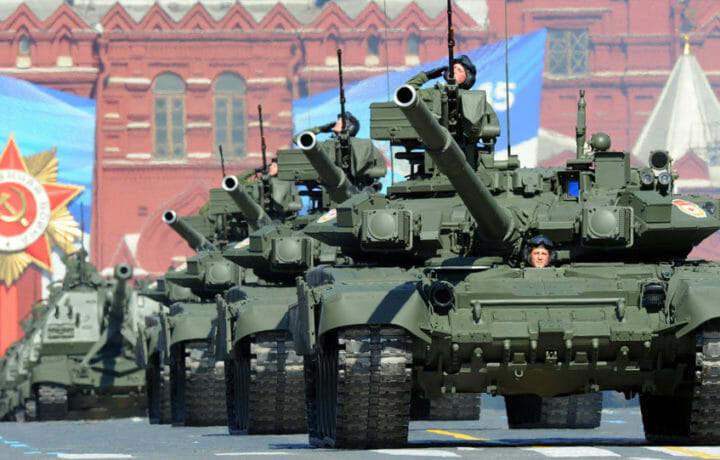Last weekend, I was having lunch with an old war buddy who has since become an Army aviator, and he described the way Army training overall has shifted its posture from a counterinsurgency-type of conflict to a Big Conventional War. That wasn’t the first time I had heard such a thing, but he said something that I found absolutely chilling: In a war that pits the U.S. versus (for example) China in all-out total warfare, the Army is telling its aviators that they should expect to lose 70% of their aircraft in the first few hours of battle.
This got me wondering about how the Defense Department plans for the “next war” when nobody knows what war it will be, or with whom. To learn more, I reached out to experts. Here is what they had to say.
CHOOSING THE NEXT ENEMY
According to Dr. Brian D. Laslie, a historian who studies air power, the Department of Defense loosely divides possible adversaries in a potential major military conflict into two categories: “most likely” and “most dangerous.” We will most likely be drawn into a conflict with a rogue nation or a state sponsor of terrorism. But the most dangerous adversaries would be Russia, China, or a “peer/near-peer competitor.”
He explains that each combatant command has a list of operations plans based on such scenarios—the U.S. Indo-Pacific Command, for example, has a plan for dealing with North Koreans, and that plan evolves over time. Likewise, the U.S. European Command has a plan that develops according to Russian aggression. But such plans are not siloed. Rather, they must be globally integrated. A conflict with North Korea would affect more than the U.S. Indo-Pacific Command; indeed, it would affect everyone.
“The U.S. Military doesn’t just make war plans because we think we might fight country X,” says Dr. Laslie. “There is history there, how a country might come into conflict with our national values and national interests. So it’s easy to see looking at post-World War II / Cold War history and a revanchist Russia and see why the military is focusing on that as a possible conflict.”
FIRST DAY LOSSES
Those losses likewise have broad context and history. “Defense planners use many, many models which have some basis in facts and statistics collected from previous conflicts,” says Dr. Jeffrey Bradford, research director of the UK Defence Forum. Operational research was jump-started during the Second World War (especially by the Air Force bombing campaigns), and would later morph into today’s RAND Corporation, the American global policy think tank. “Combat models are often mechanistic and struggle to capture the qualitative side (i.e., human thinking and innovation),” he says, “but the numbers have their place.”
So when war breaks out and the U.S. first locks swords with an opponent, what would the casualty count look like? In practical terms, says Dr. Bradford, expected losses depend on the scenario. “That is the key question: is the attack completely out of the blue, catching ships, planes, and infantry in their garrisons where they can be precision attacked? Is the scenario one with a long build up, so forces can deploy into harder-to-strike locations?”
If a major war broke out with a “most dangerous adversary,” says Dr. Laslie, those Day One losses are not pulled from thin air. He points to Operation Desert Storm. “You start with OPLAN 1002 Defense of the Arabian Peninsula, and below that would be supporting plans.” The data portion of the operations plan is called “Task Phased Force Deployment Data,” and covers everything that must be brought into theater in a timeline. Collectively, the operations and supporting plans dictate the who, what, when and where of military assets.
“These are going to be refined down to eventual deployments and movements for assets in the land, air, maritime, and special forces domains, and these components are going to make estimates for losses,” he says. Casualties and losses are based off of worst-case scenario estimates: If every Iraqi surface-to-air-missile fired hits its target; or: If every MiG can engage an American fighter; or: If Iraq crosses into Saudi Arabia early, and so on.
IS THIS FOR REAL?
None of this is mere conjecture for conjecture’s sake. “The National Defense Strategy, the National Security Strategy, and the National Military Strategy all indicate that we are re-entering an age of great power competition with Russia and China as potential threats,” says Dr. Laslie, “and these potential threats are developing military capabilities that we need to be prepared to face.”
Military exercises around the globe are certainly moving back in that direction. “I would say this is very much anticipated. The military services have individual and joint exercises that have (for the most part) always focused on that peer-on peer-conflict. For the Army, that has traditionally been the National Training Center at Ft. Irwin, and for the U.S. Air Force: Red Flag at Nellis. These exercises train units for that ‘large scale conventional’ fight, and these units are all slotted against certain plans in case that fight does occur,” he says.
To that end, Dr. Laslie points to examples of how the U.S. prepared for a Cold War fight with the Soviet Union: REFORGER and Able Archer among them. “It’s well worth the time for the younger military generation to go back and look and see how we planned to fight a large scale conventional war below the nuclear threshold in the 1970s and 1980s. Even a fiction book like Tom Clancy’s Red Storm Rising provides great insight into that style of warfare.”




